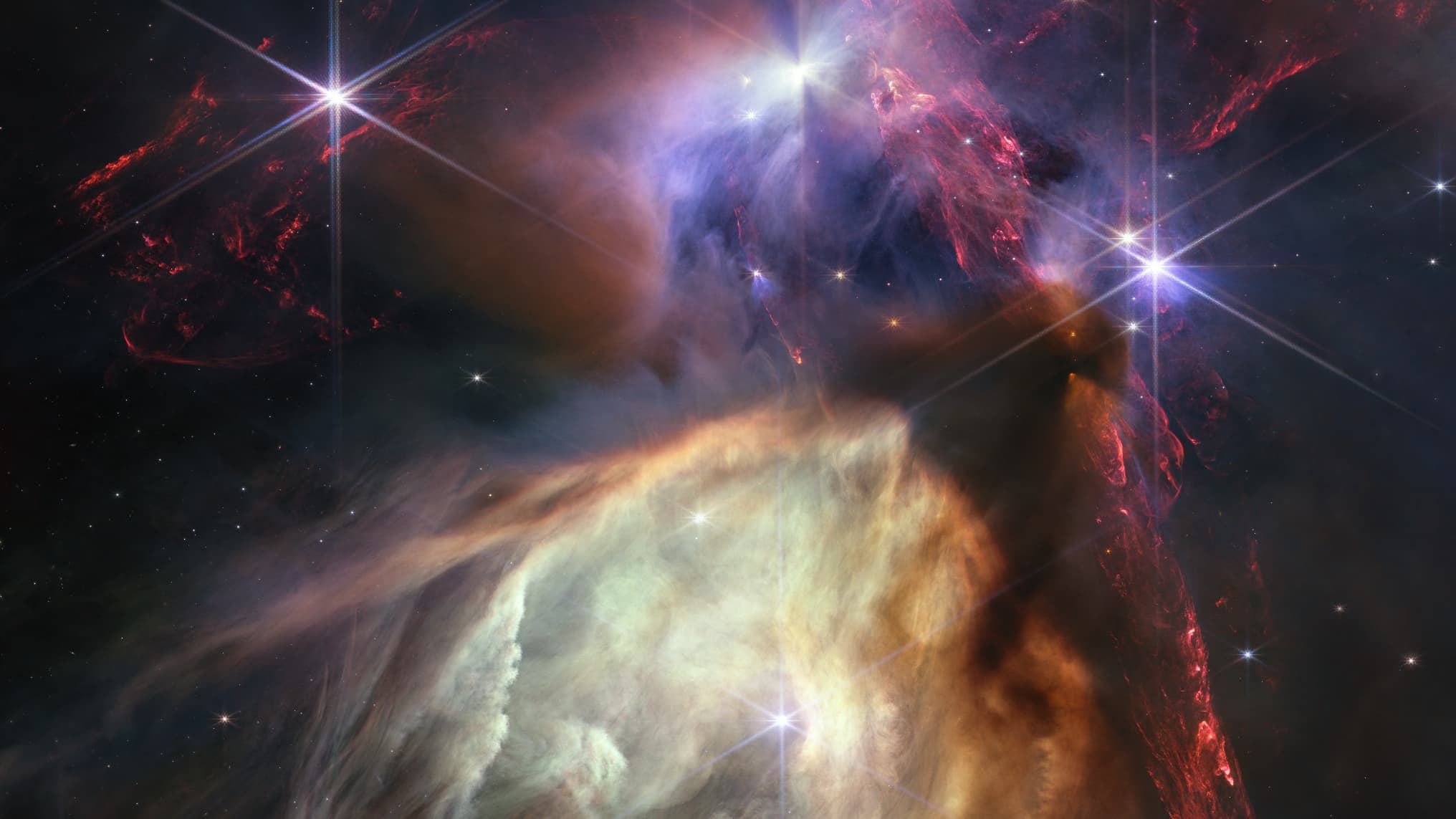
The James Webb Telescope unveils a stunning image on its first anniversary
The telescope once again made headlines for celebrating its first year in space with a snapshot commemorating the birth of fifty stars.
A year after publishing the first snapshots of the universe, the James Webb Space Telescope presented a stunning new image on Wednesday, capturing the birth of stars similar to our sun.
Jets of red hydrogen dominate the image, the result of stars exploding emerging from their cocoons of dust. It is the closest star-forming region from Earth, 390 light-years away, and is located in the Rho Ophiuchi gas cloud.
explained Klaus Pontopidan, James Webb Science Program Officer at the Space Telescope Science Institute. “Our Sun has been through a phase like this for a long time.”
On July 12, 2022, the US space agency unveiled the first color images of its new space observatory. This event marks the beginning of the scientific processes of this jewel of technology, as it has evolved 1.5 million km from Earth.
“In one year, James Webb has changed humanity’s view of the universe. Each new image is a discovery that encourages scientists to ask and answer questions they could not even dream of before,” NASA chief Bill Nelson said in a statement.
On this one-year anniversary, NASA planned to take a look back at this year’s discoveries during a live video broadcast on the Internet as James Webb continues to dazzle astronomers with never-before-seen accurate images.
A tool for scientists
Note that the most distant galaxies ever discovered, supermassive black holes, measured for the first time the temperature of Earth’s rocky “cousins” planets, which even began analyzing the atmosphere.
The stream of scholarly studies drawn from his observations is constant.
One of the telescope’s main tasks is to explore the very young universe, just a few hundred million years after the Big Bang. Another major line of research: the study of exoplanets, that is, planets outside the solar system. It should also help to better understand the formation and life cycle of stars.
In addition to these achievements, the general public was able to enjoy the lavish images. In October, James Webb revealed his first snapshot of the iconic “Pillars of Creation,” huge structures of gas and dust filled with stars in the formation stage, 6,500 light-years from Earth, in our Milky Way galaxy.
The flight of this $10 billion flying observatory aboard an Ariane 5 rocket at the end of 2021 was the culmination of decades of work.
more powerful than its predecessor, Hubble
It is the successor to the Hubble Space Telescope, and it itself is still in operation. Unlike Hubble, which observes the universe mainly in the visible spectrum, James Webb works in the infrared. This allows it to detect much weaker lights, and thus see much farther.
This wavelength is imperceptible to the human eye, and the images are then “translated” into visible colours.
The area captured by the image posted Wednesday is “completely dark when observed with Hubble,” identified on Twitter by Klaus Pontoppedan.
James Webb has enough fuel to run it for 20 years. Researchers around the world can reserve observing time with the telescope, which is carefully scheduled in one-year increments.
“We selected an ambitious set of observations for the second year, based on everything we’ve learned so far,” said Jane Rigby of NASA’s Goddard Space Center. “James Webb’s scientific mission is just beginning.”
The most important items

“Incurable web evangelist. Hipster-friendly gamer. Award-winning entrepreneur. Falls down a lot.”
